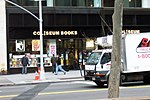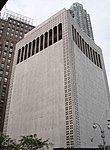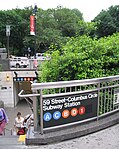Sephardic Home for the Aged
1951 establishments in New York CityAC with 0 elementsNursing homes in the United StatesUse American English from June 2021Use mdy dates from June 2021
Excerpt from the Wikipedia article Sephardic Home for the Aged (License: CC BY-SA 3.0, Authors). Sephardic Home for the Aged
Geographical coordinates (GPS) Address Website Nearby Places
Show on map
 Continue reading on Wikipedia
Continue reading on Wikipedia
Show on map Website
Sephardic Home for the Aged
Columbus Circle, New York Manhattan
Geographical coordinates (GPS) Address Website Nearby Places Show on map
Geographical coordinates (GPS)
| Latitude | Longitude |
|---|---|
| N 40.76692 ° | E -73.98218 ° |
Address
Columbus Circle 3
10019 New York, Manhattan
New York, United States
Open on Google Maps







